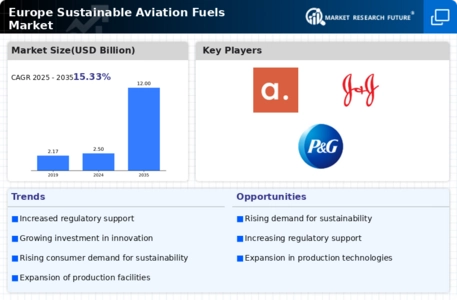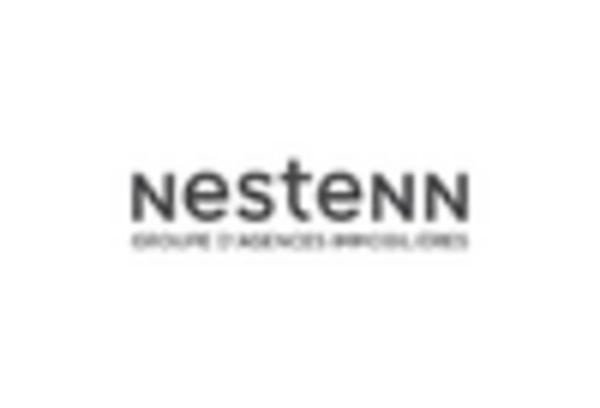Collaboration and Partnerships
Collaboration among stakeholders is emerging as a key driver in the Europe Sustainable Aviation Fuels Market. Airlines, fuel producers, and research institutions are increasingly forming partnerships to advance SAF development and deployment. These collaborations facilitate knowledge sharing and resource pooling, which are essential for overcoming the technical and economic challenges associated with SAF production. For example, joint ventures between airlines and biofuel companies are becoming more common, allowing for the establishment of supply chains that ensure a steady flow of sustainable fuels. Such partnerships not only enhance the credibility of SAF initiatives but also contribute to the overall growth and sustainability of the Europe Sustainable Aviation Fuels Market.
Investment and Funding Opportunities
Investment in the Europe Sustainable Aviation Fuels Market is on the rise, driven by both public and private sector funding. Governments are increasingly allocating resources to support the development of SAF technologies, with the European Investment Bank providing substantial loans for innovative projects. Additionally, private investors are recognizing the potential of SAFs as a lucrative market opportunity, leading to increased venture capital funding. The European Commission has earmarked billions of euros for green initiatives, which includes support for sustainable aviation fuels. This influx of capital is expected to accelerate the growth of the Europe Sustainable Aviation Fuels Market, enabling the scaling of production facilities and the commercialization of new technologies.
Regulatory Support and Policy Frameworks
The Europe Sustainable Aviation Fuels Market is experiencing a robust push from regulatory bodies aiming to reduce carbon emissions in aviation. The European Union has set ambitious targets, including a commitment to achieve net-zero emissions by 2050. This regulatory environment fosters investment in sustainable aviation fuels (SAFs), as airlines are incentivized to adopt greener alternatives. The EU's ReFuelEU Aviation initiative aims to ensure that a minimum percentage of aviation fuel is derived from sustainable sources, potentially reaching 63 billion liters by 2050. Such policies not only create a favorable market landscape but also encourage innovation in SAF technologies, thereby driving growth in the Europe Sustainable Aviation Fuels Market.
Technological Advancements in Fuel Production
Innovations in fuel production technologies are pivotal for the Europe Sustainable Aviation Fuels Market. Recent advancements in feedstock conversion processes, such as gasification and fermentation, have enhanced the efficiency and cost-effectiveness of SAF production. For instance, the development of advanced biofuels from waste materials has the potential to significantly reduce lifecycle emissions. The European Commission estimates that by 2030, SAFs could account for up to 5% of total aviation fuel consumption, translating to approximately 2 million tons. These technological strides not only improve the viability of SAFs but also attract investments, thereby propelling the Europe Sustainable Aviation Fuels Market forward.
Consumer Demand for Sustainable Travel Options
There is a growing consumer demand for sustainable travel options, which is influencing the Europe Sustainable Aviation Fuels Market. Travelers are increasingly prioritizing eco-friendly choices, prompting airlines to adopt sustainable practices. Surveys indicate that over 70% of passengers are willing to pay a premium for flights powered by sustainable aviation fuels. This shift in consumer behavior is compelling airlines to invest in SAFs to meet customer expectations and enhance brand loyalty. As a result, the Europe Sustainable Aviation Fuels Market is likely to see a surge in demand, with airlines actively seeking partnerships with SAF producers to secure a sustainable fuel supply.

















Leave a Comment